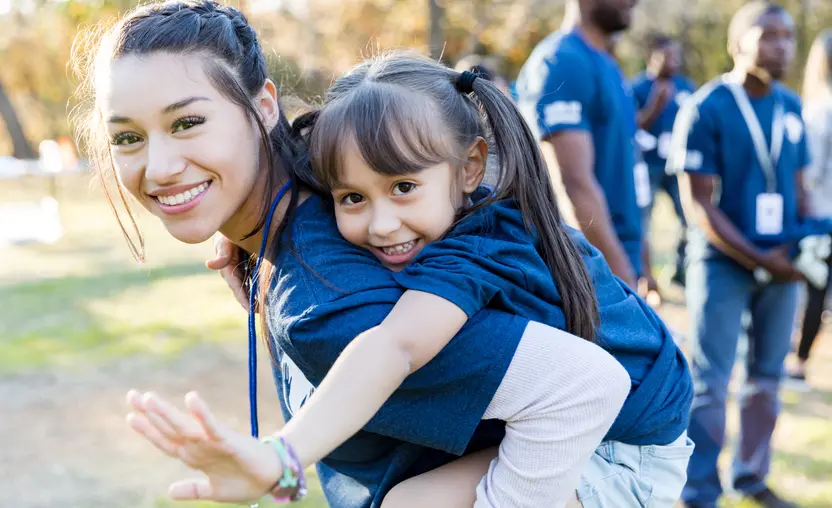How to activate your local community for #GivingTuesday

Held every November, GivingTuesday is an opportunity for nonprofit organizations to broaden their reach and maximize year-end donor generosity. One of the top strategies for reaching more donors is leveraging GivingTuesday to activate those in your local community.
By activating your community, you can tap into their networks and spread the word about your fundraiser fast. Even if you are a small and mighty nonprofit that is used to doing things on your own, having supporters fundraise on your behalf can make a dramatic difference in your fundraising potential.
Here are a few tips to leverage your local supporters for next GivingTuesday.
Identify key supporters
Identify your team and activate your online ambassadors. Your key thought leaders can generally be sorted into these five groups:
- Staff. GivingTuesday is an all-hands on deck fundraiser. Far ahead of GivingTuesday, create a calendar letting your staff know what projects need to get done to conduct your outreach, who is responsible for what, and how you will track your progress towards your fundraising goal.
- Board. GivingTuesday is the time for your board members to reach out to their connections in your community. Encourage board members to get in touch with networks to activate friends, family, colleagues, business associates, and anyone else who also has a large network.
- Clients, participants, or alumni. Your beneficiaries, both current and former, can also help out during GivingTuesday. Collect testimonials you can use in promotional materials and ask them to reach out to their networks to share their stories personally.
- Volunteers. Volunteers can help out with GivingTuesday events, participate in peer-to-peer campaigns, put up flyers around your neighborhood, or do any other tasks you need assistance with in the lead-up to GivingTuesday. GivingTuesday is also an opportunity to convert some of your most steadfast volunteers into donors.
- Committed donors and supporters who can serve as ambassadors. Donors who regularly show up to events and participate in fundraisers are some of your easiest supporters to activate for GivingTuesday. Make helping your nonprofit as easy as possible by giving them “snackables” to copy and paste directly in their social network feeds with links to your donation page and providing a copy of your style guide with your organization’s message, imagery, and impacts.
Key individuals from each of these groups will form the heart of your GivingTuesday team. These supporters will share your content and help your nonprofit reach a bigger audience. And the leg work you do for GivingTuesday will prime your nonprofit for year-end success.
Invest in the tech you need
Whether you’re reaching out to your top 15 or top 1,500 biggest local supporters, fundraising and communication tools can go a long way towards staying organized and managing your campaign.
As mentioned, organize your supporters into segments based on their relationship with your nonprofit, fundraising potential, and any other factors that might influence their ability to help your campaign. For example, you might create a special segment of local business owners who might sponsor a GivingTuesday event.
Then, use your communication tools to build out a message series for each of these segments. The first messages should arrive a few weeks before GivingTuesday to let supporters know it’s coming up and provide them with plenty of time to spread the word themselves.
Track which of your supporters open your GivingTuesday emails with your CRM and interact with your content by following links in your emails. Doing so will let you know which appeals are most effective with which audiences. As data comes in, you can adjust your approach for each segment or even identify new segments to better active your community.
Follow up to create lasting connections
The most reliable way to ensure you have support for next GivingTuesday is building strong relationships with the supporters who helped out during the previous GivingTuesday.
As part of your outreach strategy, plan how you’ll first approach supporters to interest them in your cause, walk them through the donation process, and how you’ll follow up to make them a long-term supporter.
Start by sorting supporters who participate in GivingTuesday into segments you can effectively steward. These include new donors, major donors, and recurring donors. GivingTuesday especially is likely to bring in many new donors from your current supporters’ networks. As such, they may be unfamiliar with your nonprofit outside of what a friend or family member has told them about you. For these donors, follow-up quickly after their gifts with thank you messages, educational materials about your nonprofit, and other engagement opportunities.
By keeping up strong stewardship efforts all year-long, when it’s time to activate your community next November, you’ll likely find more supporters year-after-year volunteering to help out.
The bottom line about activating community giving
GivingTuesday is a high energy, and potentially high-value, day for nonprofits. Maximize your success for this annual giving day by building connections in your community, maintaining relationships, and investing in tools like Bonterra Guided Fundraising.
Work with Bonterra



